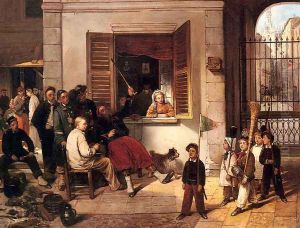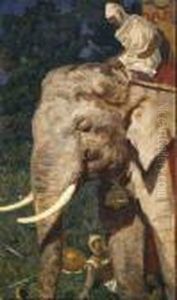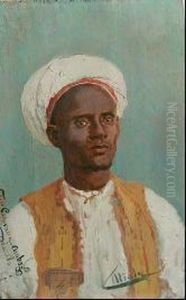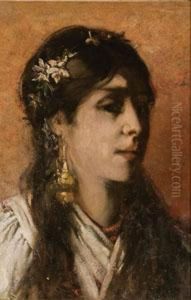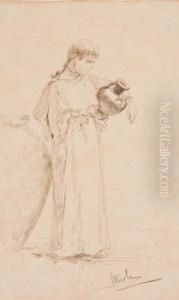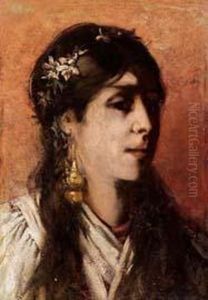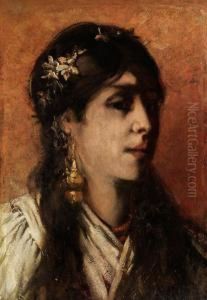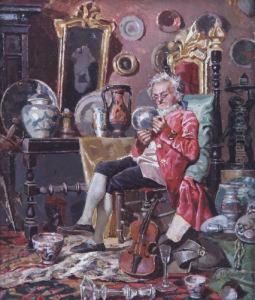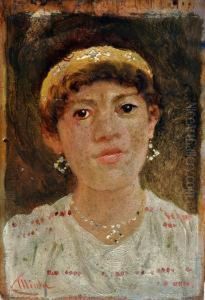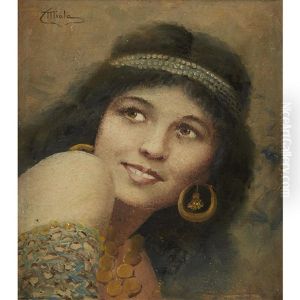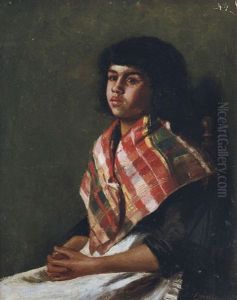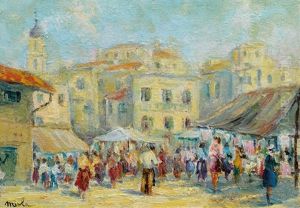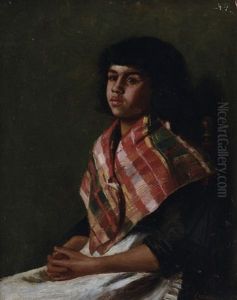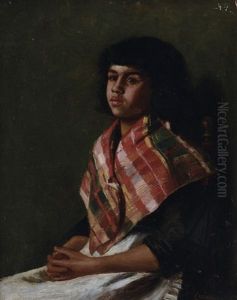Camillo Miola Paintings
Camillo Miola, also known as Biagio Miraglia, was an Italian painter born on October 8, 1840, in Naples. He is primarily known for his works in the historical and mythological genre painting tradition that was prevalent during the 19th century, particularly in Italy. His penchant for depicting scenes from ancient history and mythology was in keeping with the Romantic sensibilities of the time, which often looked to the past for inspiration.
Miola trained at the Accademia di Belle Arti in Naples, where he studied under distinguished artists such as Domenico Morelli, a painter who was influential in the development of Italian Romantic and historical painting. Miola was part of a vibrant Neapolitan art scene and was influenced by the works of his contemporaries and predecessors, which often emphasized dramatic narratives, vibrant palettes, and detailed compositions.
Throughout his career, Miola developed a distinctive style characterized by precise drawing, vivid color, and a clear narrative quality. His subjects often involved elaborate scenes from Greco-Roman mythology, the Renaissance, and the Baroque period. He exhibited his works in various venues, including the Promotrice di Napoli, where he gained recognition.
Miola's paintings were well-received by his contemporaries for their historical accuracy and imaginative portrayal of ancient civilizations. He was particularly adept at rendering the textures of marble, bronze, and rich textiles, which added to the verisimilitude of his historical scenes. In addition to mythological and historical subjects, Miola also painted religious works and portraits, showcasing his versatility as an artist.
Camillo Miola's legacy as a painter lies in his contribution to the Italian tradition of historical genre painting during a period when the country was undergoing significant political and cultural transformations. His works are part of public and private collections and continue to be studied for their artistic merit and cultural significance.
Miola passed away on May 31, 1919, leaving behind a body of work that reflects the rich tapestry of Italian history and myth, captured through the lens of 19th-century Romanticism. His paintings remain a testament to his skill as a storyteller through the visual medium and his ability to bring the ancient world to life.
